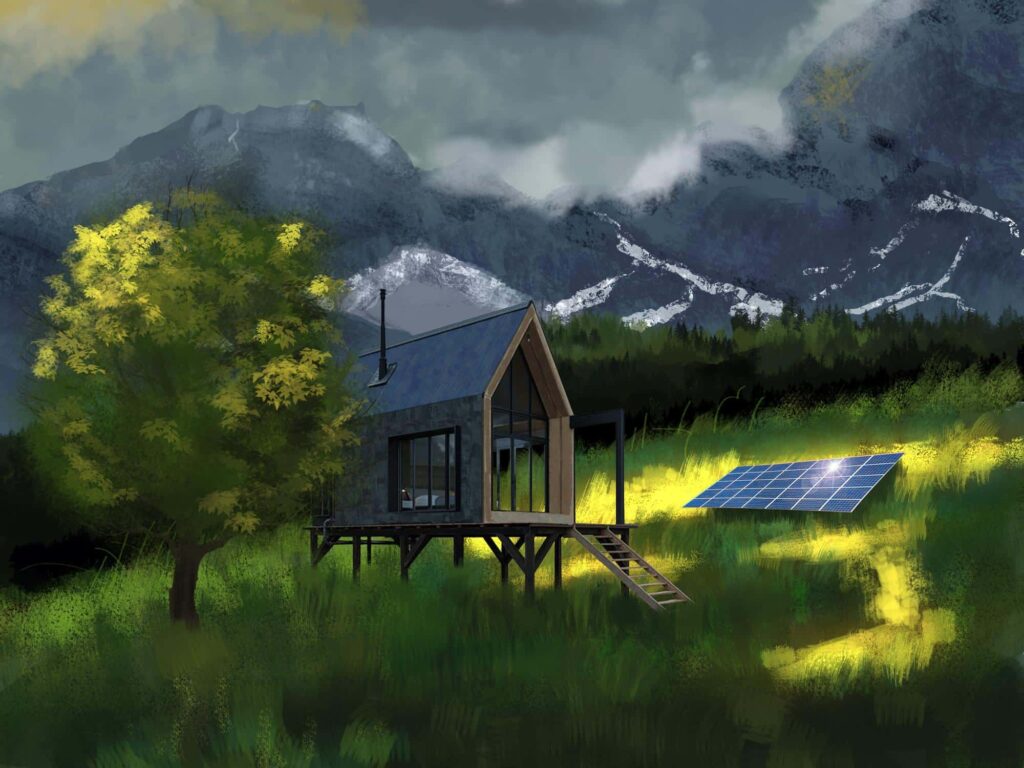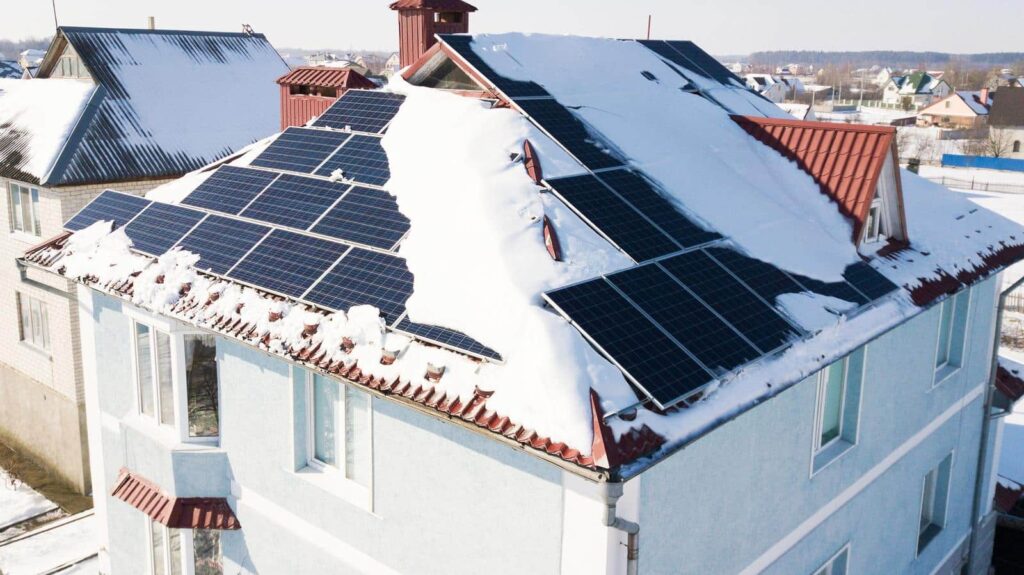For many people living in colder climates, embracing green energy solutions has been difficult due to harsh winters, lack of sunlight and limited access to resources. With advancements in solar panel technology over the years, however, utilizing renewable energy sources during winter has become much more attainable.
Solar panels allow us to take advantage of one of nature’s most powerful forces – the sun – even when temperatures drop below-freezing levels. Through proper installation and maintenance, these photovoltaic (PV) devices can generate reliable electricity all year round by converting sunlight into usable electrical current.
Advantages Of Solar Power In Snowy Climates
In winter, when the sun is low in the sky, it’s amazing to see how a few panels of photovoltaic cells can still generate energy from sunlight. Even if there’s snow on those same panels – or worse, ice – they stay strong and productive despite the conditions.
Disadvantages Of Solar Power In Snowy Climates
Solar panels generate electricity in cold temperatures with light snowfall. However, their effectiveness will diminish if there is too much buildup on the panel’s surface owing to significant snow accumulation or ice development. Most current solar panels feature anti-icing devices to prevent debris buildup but don’t always defend against severe weather like blizzards.
Tilt frames or other snow-resistant racking systems can help your solar array perform year-round. Clearing snow and ice from around your property prevents roof or equipment outages.
Installation Considerations For Solar Panels In Snowy Areas
Does solar power work in cold climates? The answer is yes – but with some caveats. Installation must be done securely and correctly in snowy areas as heavy snowfall can lead to dangerous stress on the system if not properly supported. Extra care must be taken to ensure that any ice buildup does not damage the photovoltaic cells that convert sunlight into electricity. Snow reflection off the panel also needs to be factored into calculations when designing your solar array for maximum efficiency.

Solar Panel Efficiency And Snowfall
Solar panels are designed to be able to generate electricity even in cold and icy conditions – although it is true that the amount of power produced will be reduced in snowy or cloudy weather.
- Make sure any fallen snow has been cleared off the surface of your panels.
- Keep an eye on how thick your roof is covered with snow; if it becomes too heavy, it could damage your installation’s structure and reduce its output capacity.
- Try not to let ice accumulate around the edges of the panels since this prevents heat from escaping and reduces their performance.
Heating Mechanisms To Prevent Snow Accumulation On Panels
These mechanisms range from passive systems like insulation, which traps heat in structures and keeps it out of snowy conditions; to active systems such as thermal blankets or heated cables that keep the snow off the surface of the panels.
- Insulation helps trap heat within buildings, making them more energy-efficient while also helping to reduce snowfall on nearby outdoor solar panels. This is especially useful for roofs with large amounts of unshaded areas, since these will often accumulate larger amounts of snow than those in shadier spots.
- Insulated roofing materials help retain heat during winter months by trapping warm air inside your home’s walls instead of letting it escape into colder temperatures outside.
- Thermal Blankets create an insulating layer that prevents molten water droplets from direct contact with the photovoltaic cells underneath them. This type of insulation also absorbs sunlight so that it does not get reflected back away from the cell surface – thus increasing production yields in sunny climates where snow is common in wintertime.
- Heated Cables work similarly to thermal blankets but rely on electricity rather than sunshine to generate heat necessary for melting accumulated ice/snow before it covers up critical components of a photovoltaic array system – like circuit boards or junction boxes – potentially damaging them if left unattended for too long period timespan.
How To Clean Snow From Your Solar Panels
When the winter season arrives, it can be a cause of concern for many homeowners with solar panels on their roofs. Snow accumulation can significantly reduce the efficiency of your solar panel system and should be addressed as soon as possible. Fortunately, there are several methods you can use to remove snow from your solar panels during the coldest months.
The most effective way is to proactively clear the snow off with a broom or squeegee after each storm. This will ensure no buildup and prevent ice formation beneath the array.
Battery Storage Solutions For Off-Grid Living In Cold Winter Weather
Here are 4 things you should keep in mind when selecting batteries for your off-grid home:
- Temperature: Batteries tend to lose capacity at low temperatures, so they will need to be able to handle winter conditions if you live in an area with cold winters.
- Capacity: You’ll want to pick a battery that has sufficient capacity to meet your needs throughout the year; not just during summer months when there is more sunshine available for charging. If you plan on using your solar panels all year round, choose a larger battery size than usual to last through winter.
- Type: Your choice of battery type depends on how much power you need and how often you use it. Lead acid batteries are cheaper but don’t hold their charge very well over time compared to lithium ion ones which cost more but offer better performance and cycle life expectancy.
- Maintenance: Consider maintenance requirements such as periodically checking water levels or replacing cells.
Frequently Asked Questions
What Is The Average Lifespan Of A Solar Panel?
Most high-quality solar panels can be expected to last between 25 and 30 years before needing replacement. This means that if you invest in one today, it should still be providing power for decades – even with regular exposure to snow!
How Much Energy Can Be Generated From A Solar Panel In A Snowy Climate?
Solar panels have been known to perform better in colder temperatures due to less heat stress on the components; however, snow coverage can often reduce their efficiency. Certain types of solar cells are designed with specific performance levels for various temperature ranges – so investing in these specialized products can make all the difference!
Are There Any Tax Incentives For Installing Solar Panels In A Snowy Climate?
Many governments offer financial benefits to people who invest in renewable energy systems such as photovoltaic (PV) solar systems. These incentives come in the form of credits or rebates on your taxes. Depending on where you live, you may qualify for additional grants or other assistance programs designed to make investing in renewable energy sources more affordable.
Are There Any Special Requirements For Mounting Solar Panels In A Snowy Climate?
Modern technologies have made it possible for us to install solar panels in snowy climates with confidence. Structural reinforcements can be added during installation to make sure it’s sturdy enough to withstand harsh weather conditions such as heavy snowfalls or high winds. Additionally, since most of today’s solar panel designs are relatively lightweight, they won’t put too much pressure on a roof covered in snow and ice.
Conclusion
The good news is that with cleaning and proper maintenance, knowledge, and care for your solar panels, you should be able to get years and even decades of use out of them. Therefore, if you want to invest long-term in clean renewable energy, consider investing in solar panels today!
Ultimately, investing in quality solar technology provides significant savings on electricity bills.

